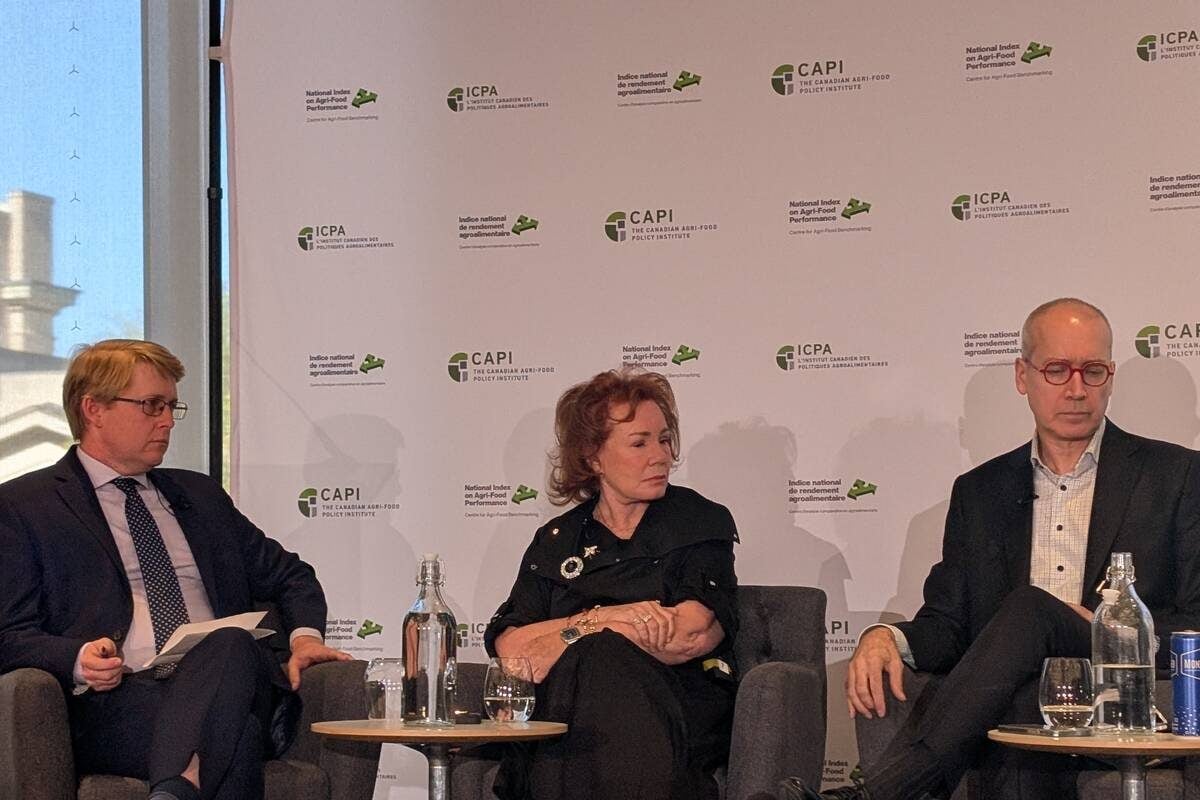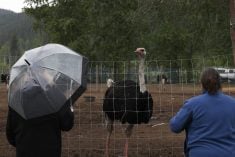DAUPHIN, Man. — David Barber’s audiences always ask the same question when he travels to China and Russia: when will it be possible to ship through the Arctic Ocean?
Answering that question has become much easier over the last few years, says Barber, Canada research chair in Arctic-system science at the University of Manitoba.
“Shipping across the pole is now open, as of 2010. In 2011 it was open and 2012 it was open again,” Barber told the Hudson Bay Route Association’s (HBRA) annual meeting in Dauphin April 3.
“The Northwest Passage has been open seven times out of the last eight (years)…. The northeast (Russian) passage route opened up about seven years ago. So all the northern sea routes are open, at least for part of the year.”
Read Also

Arlene Dickinson says recent trip to Asia opened her eyes to new trade opportunities
Arlene Dickinson says Canada must take up decades-old suggestions to support the agriculture and food sectors
The HBRA has contracted Barber to study the sea ice conditions in Hudson Bay in an effort to demonstrate that there is more open water in the north.
“It all leads back to trying to extend the (shipping) season,” said HBRA president Sinclair Harrison.
“We just can’t go to Lloyds of London (an insurer) and say we want the season extended. You have to have the science…. He (Barber) has got that in spades. He’s world recognized.”
Grain and other commodities are shipped out of Churchill for three months a year, but Harrison would like it extended to four or five months.
Barber directs the scientific efforts at a new U of M Arctic research facility, which the university officially opened in March. He also manages an international team of scientists on an Arctic research ship, the Amundsen.
For the Hudson Bay project, Barber and his team are employing a new computer model to forecast how the duration and thickness of sea ice is expected to change.
The sophisticated model requires a substantial amount of computing horsepower, so it will take a few years to crunch the numbers.
“The model is up and running … (but) we haven’t done our first projections with it yet,” he said.
“It takes about six months of computer time to project 20 years into the future.”
The model will be done on Westgrid, a supercomputer network in western Canada.
It will likely take three years to generate a comprehensive forecast of Hudson Bay sea ice conditions.
Barber said sea ice conditions in the Arctic are changing more rapidly than he envisioned. When he first travelled to the Arctic 30 years ago, he never thought he would see ships navigating the high Arctic in the summer.
However, a Chinese research vessel with ice reinforcement, which offers less protection than an icebreaker, nearly made it to the North Pole in 2010.
“They ended up going all the way to 89 degrees North,” said Barber, who grew up in Dauphin.
“The ice conditions were so deteriorated that the ship could go. They could have gone right across the pole … but the reason they didn’t is they didn’t have enough fuel on board the ship.”
As another example of how quickly things are changing, Barber said more than 1,200 tourist ships have sailed through the Northwest Passage in the last three years.
“It’s everything from a sailing vessel to this thing called The World (a cruise ship).”
China and Russia are fascinated with the possibility of melting Arctic ice because open water offers an opportunity to cut shipping times and develop petroleum and mining resources in the north, he added.
Computer models suggest the Arctic Ocean will be ice free, in the summer, in the second half of the century. However, observational data indicates the ice is melting more rapidly than forecasted.
“My most recent estimates are somewhere between 2013 and 2030,” Barber said.
Harrison said it bodes well for grain shipments out of Churchill.
Of course, how it affects the planet is a much larger question.
Barber, who takes a pragmatic approach to climate change, said Ellesmere Island was semi-tropical 65 million years ago and covered in vegetation. In other words, the planet can adjust to higher carbon dioxide levels and warmer temperatures.
“We’re not destroying the planet. We’re just destroying our own habitat.”















